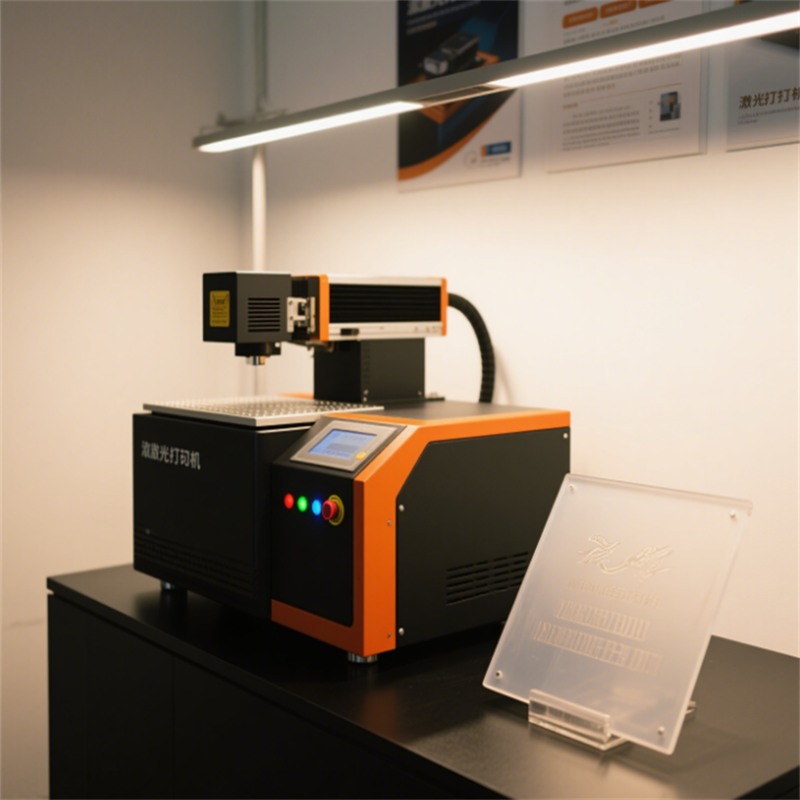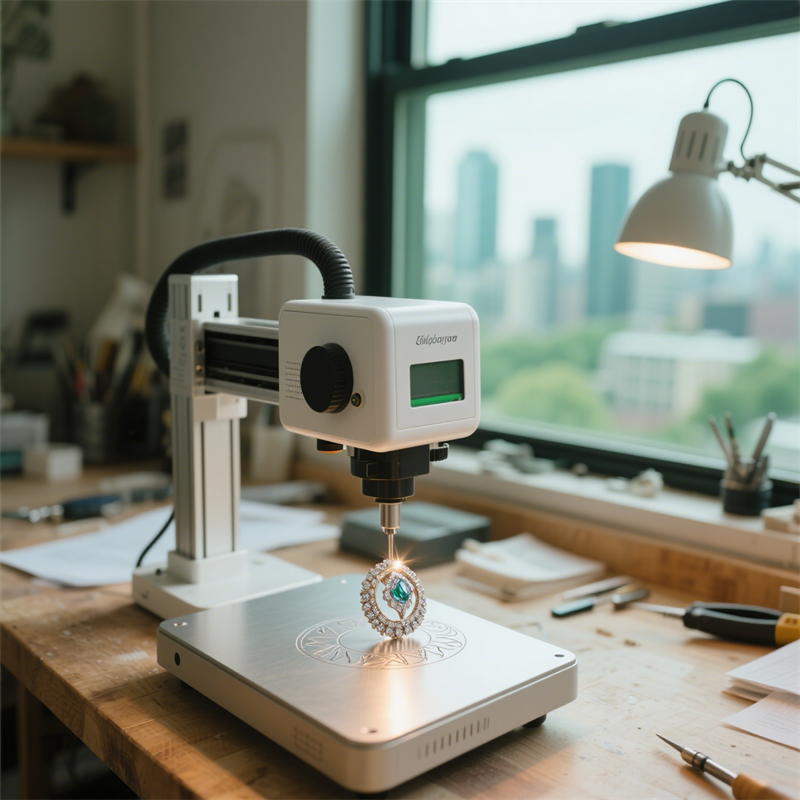In various fields such as industrial production and commodity manufacturing, we often see all kinds of clear and exquisite markings. They may be product brand logos, model parameters, or anti-counterfeiting codes. The “heroes” behind these markings are marking machines. As devices capable of creating permanent marks on the surface of various materials, marking machines are widely used. Next, let’s take an in-depth look at the mysteries of marking machines.
Definition and Function of Marking Machines
A marking machine is a device that, through specific technical means, etches, prints, or carves permanent marks on the surface of products. These marks can not only display basic information such as product brand information, model specifications, and production dates but also play important roles in anti-counterfeiting, traceability, appearance beautification, and product differentiation. In today’s highly competitive market, product markings are not only carriers of information but also important components of brand images. Marking machines provide a reliable guarantee for creating high-quality and highly recognizable product markings.
Working Principles of Marking Machines
The working principles of marking machines vary based on different technical types. Currently, common marking technologies include laser marking, pneumatic marking, and electrochemical marking, and each technology has its unique working method.
- Laser Marking: It uses a laser beam with high energy density to irradiate the surface of the workpiece, causing the surface material to melt or even vaporize instantly. By controlling the path and energy of the laser beam, predetermined patterns, texts, and other marks are formed on the workpiece surface. Laser marking features high precision, fast speed, and the marks are clear and long-lasting, not fading or wearing out due to environmental factors or long-term use. It is suitable for most metal and non-metal materials.
- Pneumatic Marking: Driven by a computer, the marking needle moves along a predetermined trajectory in the X and Y two-dimensional plane. Meanwhile, the marking needle makes high-frequency impact movements under the action of compressed air, forming dot-matrix marks on the workpiece surface. This method allows for adjustable marking depth and is suitable for metal materials with high hardness, such as automotive parts and mechanical components.
- Electrochemical Marking: Based on the principle of electrolysis, the workpiece serves as the anode, and the marking head as the cathode. Under the action of the electrolyte, the metal on the surface of the anode workpiece dissolves, thus forming marks. Electrochemical marking is easy to operate and has a low cost, and is often used for marking aluminum, copper, and other metal materials.
Common Types of Marking Machines and Their Application Scenarios
Laser Marking Machines
Laser marking machines are one of the most widely used types of marking machines. According to different laser sources, they can be further divided into fiber laser marking machines, CO₂ laser marking machines, UV laser marking machines, etc.
- Fiber Laser Marking Machines: Suitable for metal materials and some non-metal materials, such as stainless steel, aluminum alloy, plastic, ceramics, etc. In the electronics manufacturing industry, they are often used to mark characters and patterns on mobile phone casings and computer keyboards; in the hardware products industry, they are used to mark brand logos on tools and locks.
- CO₂ Laser Marking Machines: Mainly used for processing non-metal materials, such as wood, leather, fabric, paper, etc. On leather products, they can carve exquisite patterns; in the food packaging industry, they are used to print production dates, shelf lives, and other information.
- UV Laser Marking Machines: With extremely high precision, they are particularly suitable for marking heat-sensitive materials, such as pharmaceutical packaging, electronic components, film materials, etc. Due to the cold processing characteristics of UV lasers, they will not cause thermal damage to materials during the marking process, ensuring the fineness of the marks and the original properties of the materials.
Pneumatic Marking Machines
Pneumatic marking machines are commonly used in industries such as automotive manufacturing and mechanical processing. On automotive production lines, important information such as production numbers and VIN codes on key components like engine blocks and vehicle frames are marked by pneumatic marking machines. These marks are clear and firm, able to withstand the long-term use of vehicles and complex environments, providing strong support for vehicle quality traceability and management. In addition, in the mass production of mechanical parts, pneumatic marking machines can also efficiently complete the marking of model numbers, specifications, and other information.

Electrochemical Marking Machines
Electrochemical marking machines are more commonly used in scenarios where the required marking depth is not high and cost control is strict. For example, they are used to mark brand names and patterns on products such as aluminum doors and windows and copper handicrafts. Their operation is relatively simple and does not require complex equipment maintenance, making them an economical and practical marking method for small processing enterprises and workshops.
Advantages and Challenges of Marking Machines
Advantages
- Permanence: The marks made by marking machines are firm and long-lasting, not easily tampered with or worn out, able to retain product information for a long time, facilitating product circulation and management.
- High Precision: Especially laser marking machines, which can achieve micron-level precision, creating extremely fine patterns and texts to meet the personalized needs of high-end products.
- High Efficiency: They can achieve automated and mass production, greatly improving production efficiency and reducing labor costs.
- Environmental Friendliness: Compared with traditional marking methods such as ink printing, marking machines do not generate harmful chemicals and waste during operation, which is more in line with environmental protection requirements.
Challenges
Despite their many advantages, marking machines also face some challenges. On the one hand, the prices of some high-end marking equipment are relatively high, putting great pressure on small enterprises in terms of initial equipment procurement costs; on the other hand, different types of marking machines have different technical requirements for operators. Especially for laser marking machines, operators need to have certain professional knowledge and skills, otherwise, it may affect the normal operation of the equipment and the marking quality. In addition, with the continuous emergence of new materials, higher requirements are placed on the adaptability of marking machines, and continuous research and innovation are needed to meet new processing needs.

Future Development Trends of Marking Machines
With the rapid development of science and technology, the marking machine industry is also constantly innovating and progressing. In the future, marking machines will develop towards intelligence, multi-functionality, and miniaturization. In terms of intelligence, by introducing artificial intelligence and the Internet of Things technologies, marking machines will be able to automatically identify material types, adjust marking parameters, and achieve more intelligent and efficient production; in terms of multi-functionality, a single device may integrate multiple marking technologies to adapt to different materials and marking requirements; miniaturization is to meet the usage needs of more scenarios. Especially portable marking machines will provide convenience for on-site marking and mobile processing. At the same time, with increasingly strict environmental protection requirements, green and energy-saving marking technologies will also become the focus of future development.



